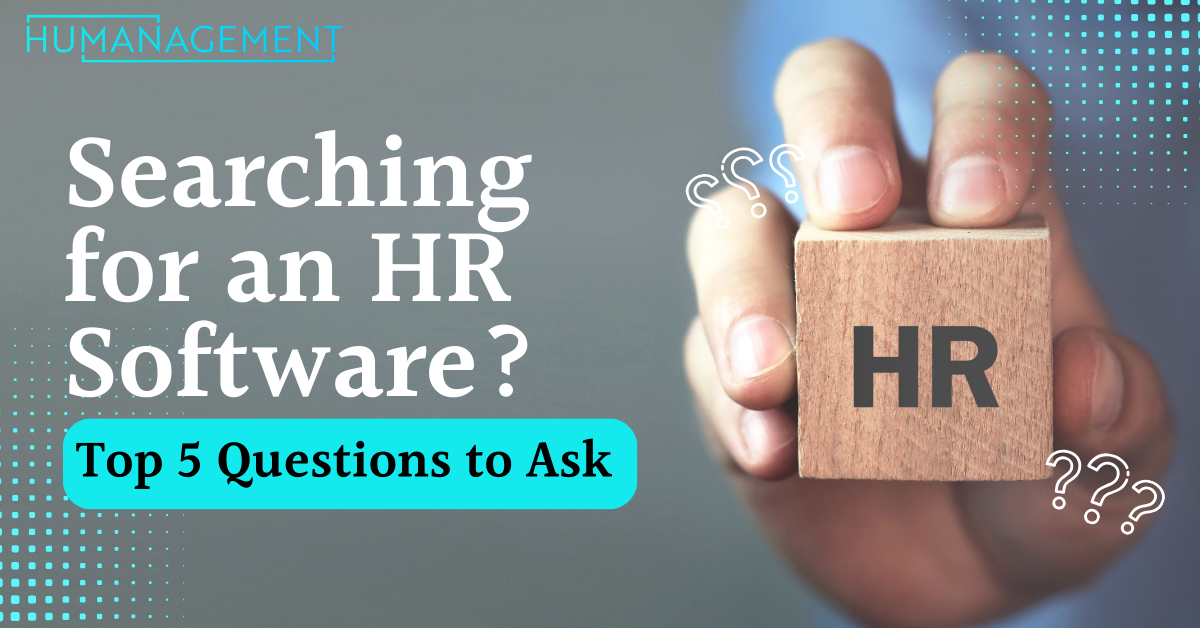

From onboarding new hires to providing mental health support and managing sick absences, businesses have many HR responsibilities. To make HR processes as efficient as possible and to maintain compliance effectively, you should be investing in an HR software system. When searching for HR software, consider answering these five questions before choosing one.
HR software systems simplify HR processes and boost productivity by securely storing people’s data in a single location. Managers, staff, and HR team members can easily manage absences, review performance, track pay and benefits, and track progress in learning and development.
Choosing the right HR software for your company can be difficult. The size of your organization and the various types of HR software systems on the market are just two of many factors to consider.
Here, we share the five key questions you and other managers in your organization should be asking in order to find the HR software system that works for you.
To identify the best HR software system for your organization, create a list of desired features. Research the various options available and select the system best suited to your needs.
A Human Resource Information System (HRIS) is a database of employee information. Also known as a Human Resource Management System (HRMS), the system streamlines HR functions and processes, increasing data accuracy. Additionally, it allows employees to access, update, and manage their own data through employee self-service, eliminating the requirement of retyping information.
Human Capital Management (HCM), also referred to as HRIS (Human Resource Information System) or HRMS (Human Resource Management System), is an HR solution that assists with payroll, learning, recruitment, and onboarding processes.
Be sure to understand the distinction between software as a service (SaaS) and on-premises software. SaaS HR software is cloud-based and accessible over the internet.
On-premises software, however, is installed on the customer’s servers and downloaded to a predetermined number of computers based on license fees paid. This software must be updated and maintained by users, whereas SaaS updates are automated.
SaaS solutions are usually considered the best option for HR since they make information easy to access and update.
Determine the goals you want to achieve with an HR system and the expected ROI. Consider factors such as increased productivity, reduced staff turnover, and time saved on administrative tasks. Research HR providers and compare the cost of their systems, as well as the cost of implementation, to the potential ROI.
To get a good understanding of HR software, view demos to evaluate the user experience and discover how well it supports your employer’s brand.
Test a demo to ensure that the HR system is suitable for your business and user-friendly. Complicated HR systems can lead to employee disengagement and a decline in their efficacy. Ensure that employees are updated with their information to reap the most benefit from the HR system.
Choose an HR system that is easy to use with minimal training and guidance. Additionally, consider if it is optimized for mobile use and which features are accessible.
Investigate how easily the HR system can integrate with other tools used to track expenses and manage employee benefits. Integration enables quick access to HCM solutions from your system with one API and a single sign-on.
All stakeholders, from the CEO to IT, require different features from an HR system. The CEO desires up-to-date data on employee numbers, performance, talent shortages, and retention challenges. Employees need access to and the ability to update their personal employment information, as well as request vacation, view e-pay slips, and seek out online training, all from any browser and device. IT, on the other hand, prefers a centralized, browser-based HR system that is straightforward to manage.
Ask yourself and senior leaders what they want from a future HR system. Consider the size of your organization now and in the future—are you growing and likely to hire more people? Doing this will help you find an HR system that meets your long-term requirements.
If your organization belongs to a group, check if an HR system can accommodate the different entities, be available in various languages, and be compatible with payroll software used abroad. Also, is it able to observe the legal regulations of different countries? If these needs are likely to arise, an HR software system that meets the specifications could be an excellent choice in the long run.

